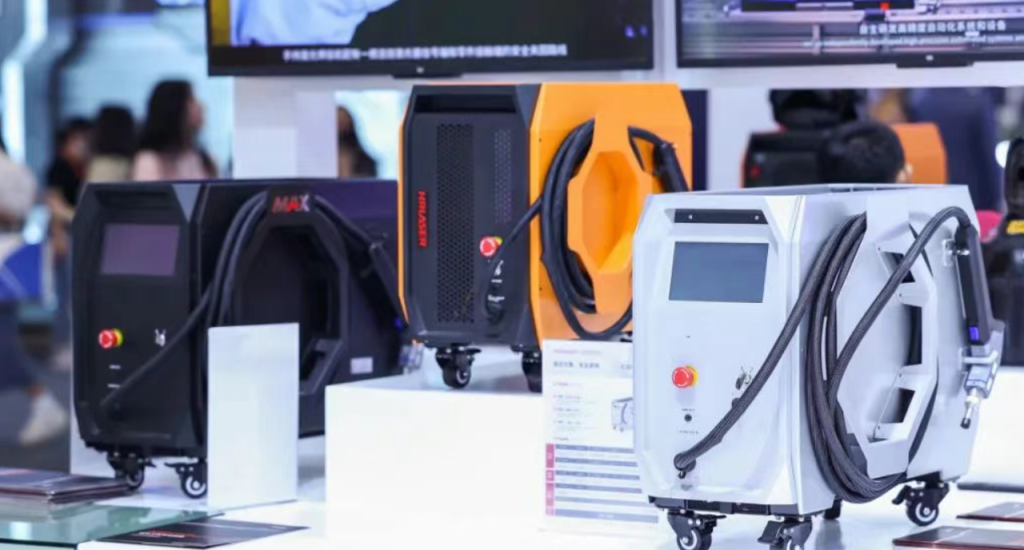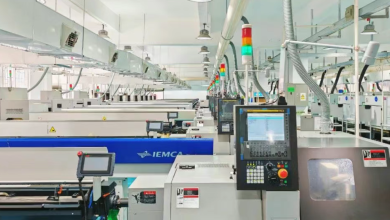
Future Trends: Smart Laser Welding and Robotics in Shenzhen
Shenzhen, the vibrant heart of the Greater Bay Area, is rapidly becoming the world’s epicenter for smart manufacturing. Known as “China’s Silicon Valley,” this dynamic city has transformed from an electronics hub into a powerhouse of intelligent automation. Among its most disruptive technologies are smart laser welding and robotics, which are now defining a new era of precision, speed, and energy efficiency across industries.

Below, we’ll explore how Shenzhen’s ecosystem is reshaping the global laser welding landscape, integrating robotics, and setting new benchmarks for advanced manufacturing.
The Rise of Intelligent Laser Welding in Shenzhen Manufacturing
Over the past decade, Shenzhen’s laser and additive manufacturing sector has grown into one of the largest clusters in China. The city’s laser industry alone accounts for over 30% of the national market and nearly 70% of Guangdong Province’s output. The driving forces behind this momentum include:
- Government-backed innovation policies, supporting R&D and industrial upgrades.
- A dense concentration of tech-savvy manufacturers and supply chains, enabling faster product iterations.
- Growing demand for lightweight, high-strength components in sectors such as electric vehicles, 3C electronics, aerospace, and medical devices.
At the recent Hannover Laser Expo in Shenzhen, more than 600 exhibitors from across the globe showcased cutting-edge solutions—from high-power fiber lasers to compact handheld welders. A recurring theme was clear: manufacturers are moving away from conventional welding methods in favor of intelligent laser welding systems that combine AI-driven process control with seamless human-machine collaboration.
While traditional TIG and MIG welding methods struggle with speed, distortion, and manual variability, modern laser welding offers:
- Narrow, aesthetically clean seams with minimal heat-affected zones.
- Up to 4× faster welding speeds on thin sheets and reflective materials.
- Consistent process stability, even with complex geometries or mixed alloys.
Leading Shenzhen companies such as Huanri Laser have pioneered lightweight, integrated machines that enable faster deployment and easier operation, significantly lowering barriers for smaller workshops and field applications.
Integration of Robotic Arms and Laser Welding Heads
One of the most important trends shaping Shenzhen’s industrial future is the synergy between robotic arms and laser welding heads.
In automotive battery pack assembly, precision robotic arms equipped with laser welders perform intricate spot welds on aluminum enclosures—an application that requires millimeter-level accuracy. In sheet metal fabrication, six-axis robots with laser tools enable fully automated, multi-angle welding paths, reducing reliance on skilled operators and shortening production cycles.
Manufacturers are also introducing modular welding cells with interchangeable tooling, allowing rapid reconfiguration between product lines. In this way, Shenzhen companies are creating flexible “smart factories” where robots and lasers work in harmony to produce everything from phone cases to electric scooters.
With costs declining and ROI periods often less than 18 months, robotic laser welding is no longer reserved for the top 1% of enterprises. Small and medium manufacturers are increasingly adopting these technologies to maintain competitiveness in a crowded market.
Cloud-Based Monitoring and Predictive Maintenance
As hardware matures, software intelligence is becoming the new battleground.
Shenzhen’s leading vendors are embedding IoT sensors and cloud connectivity into their laser welding machines. Through cloud-based dashboards, operators can:
- Track real-time process data (power, temperature, seam tracking).
- Receive alerts about anomalies or preventive maintenance needs.
- Analyze historical welding records to optimize production.
Predictive maintenance is especially valuable in high-volume environments, where a single hour of downtime can cost thousands of dollars. Smart alerts and automated diagnostics minimize unplanned outages, reduce maintenance costs, and improve asset utilization.
Government initiatives such as the “Made in China 2025” Quality Brand Strategy are also accelerating the adoption of such intelligent features, reinforcing Shenzhen’s position as a leader in industrial digitalization.
Cost and ROI: Is Smart Laser Welding Worth the Investment?
Despite their advantages, smart laser welding systems often require a higher upfront investment compared to traditional arc welders. For example, when buyers search for laser welding machines price in Shenzhen, they frequently encounter significant price ranges that reflect different levels of automation and performance:
- A high-quality handheld fiber laser welder with integrated controls typically costs approximately RMB 180,000 (about USD 28,000).
- Fully automated robotic welding cells can range from RMB 500,000 to 1,000,000, depending on customization options, power ratings, and the complexity of integrated robotic systems.
While the laser welding machines price may seem steep at first glance, many manufacturers quickly recoup these costs through higher production efficiency, lower defect rates, and substantial labor savings
However, the value proposition is clear:
- Labor costs can be reduced by up to 60%.
- Welding speeds improve 2–4×, accelerating throughput.
- Defect rates drop by 70–80%, cutting rework and scrap.
In Shenzhen’s highly competitive landscape—where price wars in the handheld welding segment have intensified—companies like Huanri Laser differentiate through:
- Lightweight design: compact units that can be transported in a car trunk.
- “Three-in-one” control systems: simplified interfaces that new operators can master in minutes.
- High-efficiency cooling: advanced air cooling and aerospace-inspired heat management to maintain performance in hot conditions.
As a result, many manufacturers recoup their investments in less than two years, especially when factoring in reduced energy consumption and minimal maintenance downtime.
What’s Next: AI-Driven Autonomous Welding Cells
Looking ahead, the evolution of laser welding in Shenzhen is pointing toward fully autonomous systems powered by AI:
- Deep Learning Algorithms will optimize seam tracking in real time, dynamically adjusting laser power and speed to compensate for variations in material thickness or surface reflectivity.
- Pure Air Cooling Systems will extend into higher power ranges (up to 2kW), further reducing energy consumption and maintenance complexity.
- Integrated Vision Systems will enable instant quality verification, removing the need for post-process inspection.
Industry analysts forecast that by 2030, global sales of handheld laser welders alone could surpass 860,000 units, with China accounting for over 70% of the market share. As these systems become more affordable and easier to deploy, adoption across SMEs will accelerate, reshaping the welding landscape far beyond Shenzhen.
Conclusion
Smart laser welding is no longer a niche technology—it’s a cornerstone of Shenzhen’s transition toward precision, sustainable, and globally competitive manufacturing.
From aerospace-grade cooling to AI-powered process optimization, Shenzhen companies are setting benchmarks that will influence the future of welding worldwide. As the “Light Up Hope” initiative shows, technology doesn’t just build products—it also builds bridges across cultures, empowers communities, and lights the path to a more connected world.
In this era of industrial reinvention, Shenzhen’s journey is a compelling testament to how smart laser welding and robotics are transforming possibilities—one perfectly welded seam at a time.





